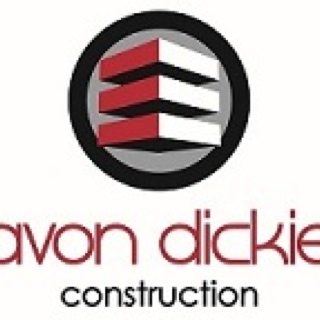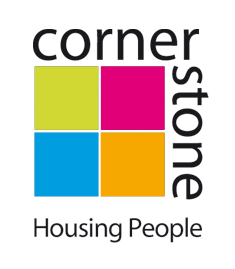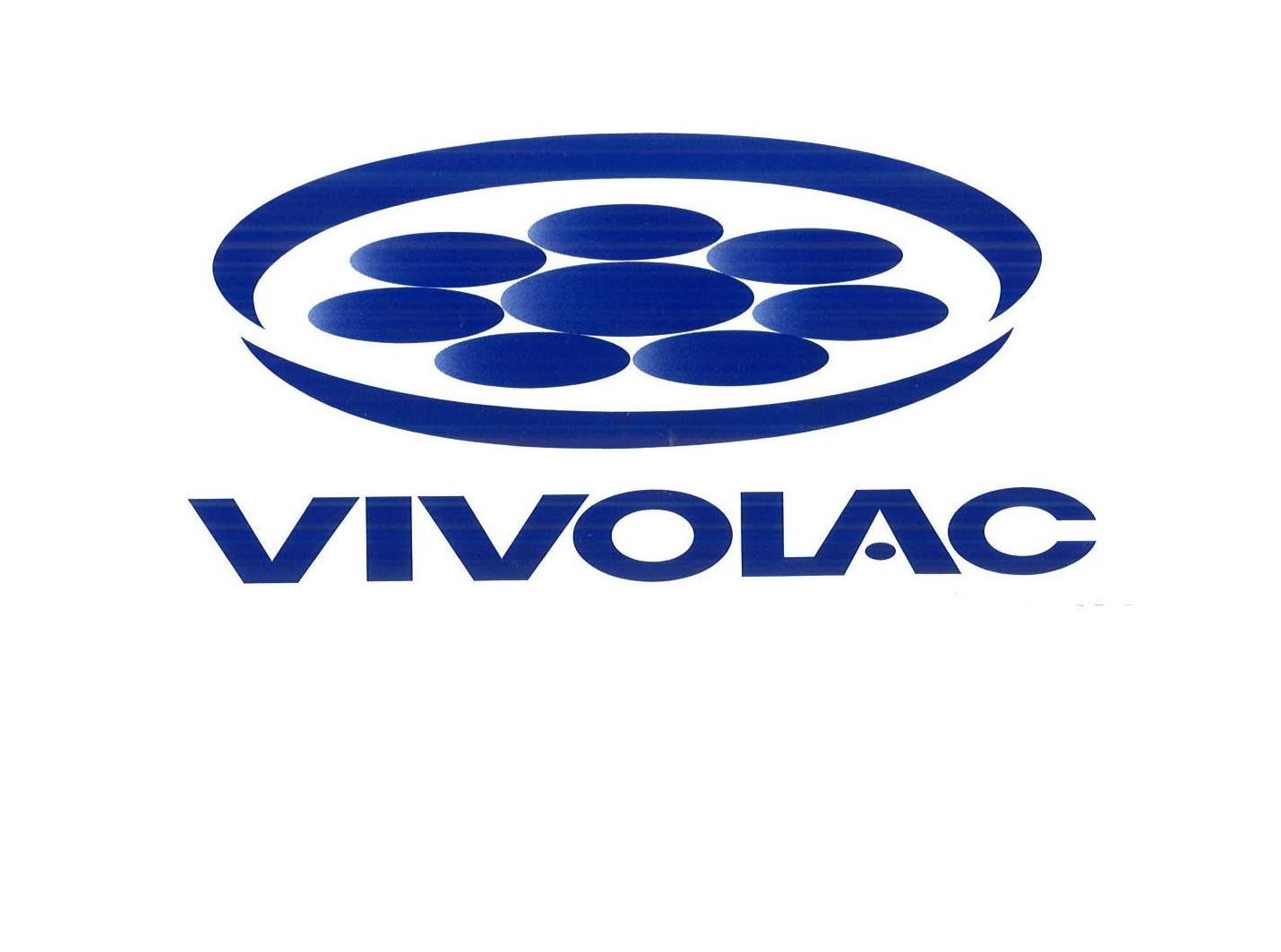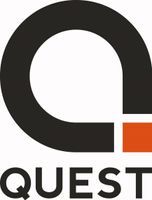Information
-
Audit Title
-
Client name
-
Address
-
Prepared by
-
Personnel assisting in audit
-
Conducted on
Executive summary
Introduction
HSG65 Management System
-
General health and safety information
-
Is there employer liability insurance and if yes state start and end date of insurance
-
Is there a written health and safety policy
-
Does the policy summaries the safety management system
-
Does the policy make a commitment to the safety of employees
-
Is the policy signed and dated by the Chief Executive (or similar senior person) and up to date.
-
Organising for health and safety
-
Is the policy published and available to all employees?
-
Does the policy explain how to deal with health and safety issues?
-
Is posts specific safety responsibilities (including emergency response) identified?
-
Does the policy identify the source of competent assistance and/or competent persons?
-
Does the policy outline the approach to health and safety training, recruitment and the introduction of new equipment or ways of working?
-
Does the policy outline the approach to employees health and safety?
-
Does the policy make reference to the general duties of employees, managers and directors?
-
Does the policy make reference to the provision of health and safety information to employees?
-
Does the policy describe the procedures for consultation and participation with employees on safety matters?
Planning for and controlling health and safety
-
Does the policy make reference to the assessment and control of risks?
-
Does the policy make reference to the assessment and control of risks to young persons (Under the age of 18)?
-
Does the policy make reference to the assessment and control of risks to new and expecting mothers?
-
Does the policy make reference to the procedures for serious and imminent danger (response to fire, major release of chemicals, collapse of structure etc)?
-
Does the policy make reference to the arrangements for contact with the emergency services?
-
Is there reference to co-operation in respect of safety shared premises, if appropriate?
-
Do plans make reference to any special arrangements for ensuring the safety of visitors, contractors and temporary employees, including agency staff?
-
Does the policy make reference to the control of any of the companies activities that may affect the general public?
-
Setting health and safety objectives
-
Have suitable and sufficient health and safety objectives been set?
-
Have long-term and short-term objectives been set?
-
Are objectives SMART?
-
Have safe targets been set?
-
Is there a link between health and safety objectives and personal targets?
-
Monitoring for health and safety
-
Does the policy make reference to safety inspections, audits, incident and accident investigation and the follow up?
-
Does the policy make reference to the monitoring of health and safety?
-
Does the policy make reference to the monitoring of the learning environment?
-
Inspections
-
Is there a system for recording results of active monitoring and taking action where appropriate?
-
Is there a requirement for all incidents and accidents to be investigated?
-
Is there a procedure for incident and accident investigation and the recording of results?
-
Is responsibility for investigation clearly allocated?
-
Have those responsible for investigation been properly instructed and/or trained?
-
Is every place and activity in the company subject to a scheme of active monitoring (safety inspections, safety tours, safety surveys and safety management audits)?
-
Is responsibility for monitoring clearly allocated?
-
Have those responsible for carrying out active monitoring been properly trained?
-
is there provision for assistance with active monitoring?
-
Are there set frequencies for active monitoring?
-
Reviewing the health and safety management system
-
Is there a formal management procedure for reviewing health and safety performance? That covers:<br> * All departments<br> * results of active monitoring<br> * results of reactive monitoring<br>
-
Are the results of reviews recorded in annual or self-assessment reports?
-
Are targets for future health and safety performance set and incorporated into action plans?
-
Is the policy and organisation reviewed at senior management level each year and updated where necessary?
-
Are actions identified with individuals tracked and actions completed recorded?
Control of health and safety
-
Health and safety post and responsibilities
-
Is there a director appointed as being responsible for health and safety?
-
Is there a clear structure for selecting persons with health and safety responsibilities within their appointed job role?
-
Accountability and setting performance standards
-
Is safety incorporated into the job description of all employees from senior managers to operatives?
-
Do the appraisals of employees include an assessment of their safety performance and their achievements of safety objectives?
-
Do senior management, and all other levels of management and supervisory levels show commitment to health and safety?
-
Competence (selection, induction and training)
-
Do those responsible for recruitment know:<br> * The hazards in the job role?<br> * The qualities required to do the job safely?<br> * Of the need to gauge the suitability of the job for young persons?
-
Are physical capabilities taken into account on selection such as: strength, height and any other special requirements for the post?
-
Is there a requirement for hearing, eyesight test or any other tests before the person is appointed?
-
Are candidates asked general health and safety questions relevant to their role at interview?
-
Are candidates with specific health and safety requirements such as: driving, machine operations, management or supervisory roles asked relevant questions and original certificates seen at interview?
-
Are young persons (under 18) immaturity, special needs and lack of experience taken into account relation to the job role they are being interviewed for?
-
Once employed are all new employees given induction training relevant to their job role that includes:<br> * Work area hazards<br> * Accident procedures<br> * Fire procedures<br> * Lifting and handling procedures<br> * Welfare facilities
-
Are employees given adequate training relevant for their roles and responsibilities?
-
Are employees given a training scheme at appraisal for the year ahead?
-
Are operatives given adequate training when new equipment, technology or systems are introduced?
-
Are staff with emergency response responsibilities trained for their roles and refresher training carried out at regular periods?
-
Are training records maintained for all members of staff?
-
Co-operation
-
Are there arrangements for consulting employees on safety matters within the workplace?
-
Is there an health and safety committee or works council/forum that meet regular to discuss health and safety? if yes state how often they meet.
-
Are the following discussed at health and safety meetings:<br> * Progress from previous meeting<br> * Incidents and accidents<br> * safety audits and inspections<br> * Assessment updates<br> * New safety information from HSE and legislation<br> * Reports from safety representatives<br> * Safe systems of work<br> * Workplace safety publicity<br> * Fire<br> * Target setting and performance
-
Is the chair person of the health and safety committee of senior management?
-
Are employees from all departments represented on the committee?
-
Communication
-
Is the "health and safety law poster" prominently displayed?
-
Are safety signs displayed where necessary in accordance with the Safety Signs and Signals Regulations that inform employees and non-employees of hazards and preventative measures?
-
Is there a system for employees to report hazards and health and safety concerns?
-
If the company have union appointed safety representatives, are managers aware of their rights to:<br> * office facilities<br> * paid time off work for carrying out their functions and for training<br> * carry out inspections (providing they inform you in writing)<br> * relevant safety information
-
Where there are no union safety representatives appointed are managers aware of the need to ensure all employees are informed on health and safety matters?
-
Are managers and supervisors aware of safety guidance for their area and how they can access this information?
-
Are there arrangements for liaising with enforcing authorities and other external agencies relevant to health and safety?
-
Is there a business continuity plan in place?
Risk assessment and risk management
-
Is a risk assessment made for any new or modified activity, process, plant, equipment, substances, premises etc.
-
Have all existing, process, plant, equipment, substances, premises etc. been assessed for risk?
-
Are risk assessments relevant, suitable and sufficient? <br>
-
Is the responsibility for carrying out the risk assessment clearly allocated?
-
Is there provision for the co-ordination of risk assessments?
-
Are assessments recorded and up to date?
-
is there provision for evaluation of risk assessment results and how risks can be eliminated or reduced?
-
Are the results of risk assessments communicated to those affected by the hazards such as: <br> * Employees<br> * Contractors <br> * members of the public
-
Are there instructions to indicate when an assessment should be reviewed?
-
Is there a risk assessment policy for young persons?
-
Is there a risk assessment policy for lone workers?
-
Is there a risk assessment for new and expecting mothers?
-
Have safe systems of work been produced to reflect assessment controls?
-
Health surveillance
-
Have special occupational health hazards (e.g. ULD, asthma, deafness, vibration etc.) been identified and considered in relation to health surveillance screening?
-
Have you identified any job role that will require an health assessment before recruitment?
-
Have you made arrangements for obtaining medical advice if required on occupational health questions?
-
Do you have arrangements for reviewing sickness absence and helping employees to return to work after a period of illness?
Control of substances hazardous to health (COSHH)
-
Is health and safety considered in all potential substances purchase decisions based on the Manufactures Safety data Sheet (MSDS) information?
-
If found to be a hazardous substance are suitable safer alternatives considered before purchasing a substance?
-
Are all hazardous substances delivered accompanied with a MSDS?
-
Are all hazardous substances within the company identified and stored correctly?
-
Are COSHH assessments completed for all hazardous substances and recorded on a central register?
-
Do the COSHH assessments include the following information:<br> * The hazardous substance<br> * methods of use<br> * Risk to health<br> * Control measures<br> * Actions, if any required to prevent or control exposure<br> * Emergency planning <br> * Information and training
-
Are COSHH assessments communicated to all those who may be effected by the hazardous substance?
-
Are the control measures in place, monitored and maintained?
-
Are there routine examination of Local Exhaust ventilation (LEV) and examination by a competent person at the prescribed periods?
-
Is there any workplace processes that will require appropriate monitoring such as: <br> * Air monitoring<br> * Dust monitoring <br> * Fumes<br> * water
-
Have any work activity been identified where the employee will require health surveillance and if yes are the records kept for 40 years?
-
Are records of equipment examinations, workplace monitoring kept for 5 years?
Provision and Use of Work Equipment Regulations (PUWER)
-
Are specification and purchasing of new equipment checked to ensure that adequate information and design features are provided to ensure all health and safety standards are met?
-
Are past health and safety performance considered when selecting suppliers and equipment?
-
Is a check made to ensure the manufacturer or importer of new equipment complies with the machinery safety regulations and that the equipment has the CE mark?
-
Is a check made to ensure that adequate design features and information are provided so that the equipment can be installed, set, used, maintained, dismantled or disposed of safely?
-
Are risk assessments carried out on work equipment that include:<br> * Assembly and Operation<br> * Clearing blockages<br> * Emergency procedures<br> * Cleaning<br> * Maintenance
-
Is machinery adequately guarded?<br>
-
Are personnel trained and authorised to use equipment?
-
Is there sufficient working space around machinery?
-
Are pressure systems regularly inspected by a competent person in line with the pressure vessels regulations?
Fire risk assessments
-
Has a fire risk assessment been carried out on the premises?
-
Has the risk assessment considered the duty of care of non-employees?
-
Are all emergency exits and routes clear of obstruction?
-
Do all emergency doors open in the direction of travel and can be opened immediately in an emergency?
-
Are all emergency exit routes properly identified, marked and illuminated where necessary?
-
Are all emergency routes designed for speedy egress?
-
Is there a suitable fire detection and alarm system?
-
Are alarms and emergency lighting tested regularly and records kept?
-
If sprinkler system has been advised, has one been fitted which is appropriate for the premises and are flow tests carried out according to routine procedures?
-
Are there suitable and sufficient fire extinguishers relevant to the fire hazards in the area with correct labels above and checked weekly and serviced by a competent person annually?
-
Are internal fire doors fitted with self-closing devices and kept shut notices attached?
-
Are fire drills carried out regularly and at least once a year with a full report of the evacuation maintained and any relevant actions taken?
-
Have fire marshals/wardens been appointed and received training?
-
Are personal Emergency Evacuation Plans (PEEPs) carried out for any person needing assistance in an emergency?
-
Are flammable liquids and gases stored correctly?
-
Are combustible materials stored correctly?
-
Are Waste and bins stored away from building in a secured area?
-
Is there a hot work permit to work system in place for all hot work?
-
Is there a fireman's information box within the premises?
First aid at work
-
Has a first aid assessment been carried out and recorded?
-
Are there adequate first aid facilities in the event of an injury?
-
Is there appropriate numbers of trained first aiders and appointed persons?
-
Has employees been informed of first aid arrangements?
-
Is there a system for reporting injuries, diseases and dangerous occurrences which confirm to RIDDOR 2013?
-
Do you have a responsible person who notifies, report and records all events that are covered by RIDDOR?
-
Is there an adequate secure system for recording all reports and investigations?
Electrical safety
-
Has specific responsibilities been allocated for the safety of the electrical distribution systems on the premises?
-
Is the person appointed technically competent or has he/she access to competent technical advice?
-
Are adequate diagrams and descriptions of the electrical system available?
-
Are all electrical modifications carried out in accordance with IEE wiring regulations?
-
Is the electrical system inspected and tested on a systematic basis at regular intervals?
-
Is work on distribution system and electrical equipment restricted to authorised and competent personnel?
-
Are there clear instructions on the limitation of live electrical working with a permit to work system?
-
Are there clear arrangements for allocating responsibilities when electrical contractors are on the premises?
-
Has specific responsibility been allocated for the safety of fixed and portable equipment?
-
Does the purchasing and supply system take full account of electrical safety factors when purchasing new equipment e.g. for wet or dusty conditions?
-
Are all equipment maintained in a safe condition such as:<br> * Hand tools<br> * Portable tools<br> * Ladders and other access equipment<br> * Welding equipment<br> * Compressed air<br> * Electrical test equipment
-
Has portable electrical equipment been inspected and PAT tested on a regular basis?
-
Are there procedures for dealing with faulty electrical equipment whilst in use or when detected during inspection and testing?
Working at Heights regulations
-
Have potential work at heights been identified and an assessment completed that include a emergency rescue plan?
-
Are warning signs fixed at the approach to fragile roofs, and is work on fragile roofs strictly controlled with a permit to work?
-
Are ladders and stepladders in good condition, registered and regularly inspected?
-
Are MEWPs used to gain access and if so are they properly constructed, tested and safe to use in the areas by a competent authorised person?
-
Have work areas with open edges been fitted with guardrails and toeboards?
-
Are contractors who carry out work at heights been vetted, instructed and issued with a permit to work?
Manual handling and musculoskeletal disorders?
-
Has an assessment been made of all manual handling tasks where there is a risk of injury?
-
Has action been taken to eliminate manual handling operations?
-
Where manual handling cannot be eliminated have steps been taken to reduce the risk of injury, taking into account the task, load, environment, individual capacity and offer factors?
-
Is there a system for ensuring the written assessment of risk of injury is reviewed when no longer valid, or when there has been a significant change?
-
Is suitable and sufficient manual handling training given to employees?
-
Are managers committed to, and workers actively involved in, controlling risks from manual handling?
-
Are there any indicators of factors of a risk of ULDs within the workforce?
-
Has an assessment of risk been carried out with the use of the HSE ART tool?
-
Has action been taken to eliminate or control the risk of ULDs?
-
Have employees been provided with suitable instructions and training of avoidance or control of ULD that include the importance of job rotation?
-
Is there a system for ensuring that the written assessment of ULDs is reviewed when no longer valid, or when there has been a significant changes?
Display Screen Equipment Assessments
-
Have you identified any employees who may be classified as "users" under the DSE regulations?
-
Has the risk of using DSE workstations been assessed?
-
Has the work of users been adequately planned to permit periodic breaks or changes of activity?
-
Have arrangements been made for eyesight tests as required by the regulation?
-
Have users been provided with comprehensible information on measures taken to comply with the regulations?
-
Has health and safety training been given to users as required by regulation 7?
Workplace transport
-
Has a workplace transport assessment been carried out and recorded?
-
Do the layout routes keep vehicles and pedestrians safety apart?
-
Are there any potentially dangerous areas such as unmarked crossing points used by pedestrians, blind corners, routes from car parks etc?
-
Are vehicle routes in good condition, wide enough and free from obstructions?
-
Are roadways and traffic flow well designed, e.g. Good use of one-way systems, signs, speed bumps, barriers to separate pedestrians from traffic?
-
Are vehicles suitable and well maintained?
-
Are drivers trained in on-site safety?
-
Do drivers and pedestrians behave in a safe manner?
-
Is vehicle reversing made as safe as possible?
-
Are vehicles loaded and unloaded safely?
-
Have potentially vulnerable columns been protected to prevent damage to structure?
-
Are forklift operations controlled?
-
Company vehicles and drivers
-
Is there a driver policy that includes the use of mobile phones?
-
Are company vehicles maintained and a breakdown procedure in place?
-
Do drivers carry out regular checks of vehicles and are they recorded?
-
Is there a procedure for identifying who is driving the vehicle at any time?
-
Is there an incident and accident reporting procedures?
-
Is there an adverse conditions procedures such as weather conditions?
Noise assessments
-
Has a noise assessment been carried out?
-
Has the recommendations from the noise assessment been actioned?
-
Has PPE been selected and issued as required?
-
Has health surveillance been carried out if required?
Vibration
-
Has vibration assessments been carried out?
-
Has actions from assessment been carried out?
-
Has employees received training in vibration awareness?
-
Has the purchasing of equipment considered the vibration levels?
Slip, trips and falls
-
Are floors even and free from holes?
-
Are work areas and access routes kept free from work in progress, waste and equipment, including tools and trailing cables?
-
Are work areas and access routes well lit?
-
Are stairs well-constructed and fitted with handrails?
-
Do floors get contaminated by water, oil or grease?
-
Are floors inherently slippery when clean or do they become slippery when contaminated?
-
Have other steps been taken to reduce the risk such as provision of slip resistant footwear?
-
Are floors routinely cleaned and a spillage policy in place?
Personal Protective Equipment (PPE)
-
Has PPE been identified for all circumstances where the hazard cannot be removed?
-
Has PPE been assessed to ensure it is suitable and sufficient the task?
-
Is PPE regularly inspected and properly maintained?
-
Is suitable and sufficient accommodation provided for personal clothing not worn at work, and special clothing worn at work but not taken home?
-
Has employees been given information, instruction and training in the correct use of PPE?
-
Is there a PPE replacement procedure?
Lifting Operations and Lifting equipment Regulations (LOLER)
-
Is the lifting equipment strong and stable for the specific use and marked with SWL?
-
Is the lifting equipment used safely with all work being planned, organised and performed by a competent person?
-
Are there thorough inspection and examinations carried out by a competent person every:<br> * 6 months for lifting people or lifting accessories <br> * 12 months for all other lifting equipment
Asbestos
-
Have an asbestos survey been carried out on the premises?
-
Is there an asbestos management folder available on site?
-
Have all staff been trained on the identification of asbestos and what action to take on finding asbestos?
-
Are contractors and employees informed of where asbestos is located in the premises before commencing work?
-
Are there on-going management checks of asbestos in the building for damage?
New premises or extensions (CDM)
-
Are the requirements of the Construction (design and management) Regulations 2007 adhered to for all relevant building construction and demolition work?
-
Is the company aware of its duties as the client under the CDM, including the appointment of CDM co-ordinator, designer and principal contractor and ensuring that a health and safety file is available and up to date?
-
Do any new premises, extensions or modifications comply with the requirements of the Workplace (Health, safety and Welfare) Regulations?
-
Are there asbestos surveys carried out before any work commences under the Control of Asbestos Regulations 2012?
Workplace (Health, Safety and Welfare) Regulations
-
Are there suitable and sufficient sanitary conveniences provided that includes disables facilities?
-
Are they adequately ventilated?
-
Are the sanitary conveniences clean and well maintained?
-
Are suitable and sufficient washing facilities, including showers if required by the nature of the work , provided at readily accessible places?
-
Are the washing facilities clean and well maintained?
-
Have water temperatures been reduced to prevent scalding?
-
Has a legionella assessment been carried out and the following completed and recorded? <br> * All taps, shower heads descaled and disinfected every 3 months?<br> * Showers ran for at least 2 minutes a week?<br> * Hot water temperature checks are carried out and recorded weekly?
-
Is there an adequate supply of drinking water that is labeled is as drinking water and maintained in good order?
-
Is there suitable and sufficient seating provided for all persons who, whilst at work, able to sit without adversely affecting the work?
-
Is suitable and sufficient rest facilities provided, including facilities for eating meals where meals are taken at work? minimum requirements is:<br> * kettle<br> * Microwave<br> * Fridge<br> * Seats with back rests and tables<br> * Consideration for disabled persons
-
Does each person have an adequate amount of space? (11 cubic meters per person)
-
Are workstation suitable for any person likely to use them, including where appropriate for persons with disabilities?
-
Do workstations provide protection from adverse weather, enable any person to leave swiftly and, so far as reasonably practicable, ensure that any person at the workstation does not slip?
-
Is there any evidence of inadequate maintenance of the workplace, equipment and devices?
-
Has effective and suitable provision been made to ensure that every enclosed workplace is ventilated with the right amount of air change?
-
During the working hours, is the workplace temperature reasonable?<br> * Sedentary workers 16c<br> * manual workers 13c
-
Are thermometers provided in each room?
-
Is there suitable and sufficient lighting, using natural light whenever possible, which takes account of the operations to be carried out?
-
Where windows or skylights are used for lighting, are they clean and free from obstruction?
-
Is the emergency lighting where people would be exposed to danger?
-
Are the surfaces of floors, walls and ceilings capable of being cleaned to a suitable standard, and are they clean?
-
Is the workplace free from overflows, spillages and waste material (other than waste materials in a bin)?
-
Is information available on floor strength?<br>(If yes state how the floor loading was determined)
-
Is every door, gate, wall or partition which is transparent and with which persons are likely to come into contact with made of safety material or protected so as to avoid injury in the event of breaking, and are they appropriately marked?
-
Are sliding doors constructed to ensure they do not come off the track?
-
Do powered doors have identifiable emergency stop controls?
-
Can powered doors be operated manually, or are there alternative means of escape if the power failed?
-
Do doors, gates or curtains, which are opened by pushing, allow clear view through when closed?
-
Do doors have door jamb covers on in areas where young persons may put their hands in?
-
If pedestrians use the same doors as vehicles, have steps been taken to eliminate or reduce the risk of being struck by the door?
-
Have windows above floor level been fitted with restrictors to prevent persons falling out?
-
Are shelving inspected and tested by a competent person annually and monthly inspections carried out and recorded?
-
Does shelving have safe working load (SWL) displayed on them?
Control of contractors and visitors
-
Are there company health and safety rules for using contractors?
-
Is there a preferred contractors register?
-
Do the rules provide for:<br> * Clear allocation of responsibility?<br> * Liaison with a named member of management? <br> * Use of contractors equipment?<br> * Use of company equipment and services?<br> * Exchange of information on health and safety?<br> * Emergency procedures?<br> * Observation of safe procedures?
-
Are pre-qualification safety standards determined and examined before awarding contracts to external contractors?
-
Are there company health and safety rules for visitors?
-
Do the rules provide for:<br> * Provision of any necessary safety equipment?<br> * Provision of information on any risks to health and safety?<br> * Emergency procedures?
-
Are sub-contractors vetted and monitored on a regular basis?
-
Is there a permit to work system for all contractors carrying out work on the premises?
Shared premises arrangements
-
Are there arrangements for co-operating and co-ordinating with persons in shared buildings and neighbours?
-
Is there a clear agreement on who is responsible for maintaining and cleaning common areas and facilities?
-
Are there adequate arrangements for communicating health, safety and welfare problems to the person responsible?
Work placement, experience and apprentices
-
Are employees working environment and employers assessed prior to placement?
-
Is this assessment carried out by a competent person and recorded?
-
Is action/development plans provided to employers who do not have suitable health and safety standards?
-
For learners already in employment are there employer and workplace assessments against statuary requirements?
-
Are employees attending training and being assessed in the workplace?
Occupational health
-
Does the company employ an occupational health specialist?
-
Does the company have a stress policy and monitor stress?
-
Does the company have a policy on abuse in the workplace?
-
Does the company confirm to the working time directive?
-
Is there a policy and procedures for administering medicines?
Security
-
Is there a single controlled access point into each building?
-
Is the reception area clearly identified for visitors and contractors to book in before entering?
-
Are all visitors required to sign in and escorted around the building? and issued with an identity badge?
-
Has the workplace been safeguarded against unwanted individuals and trespassers as a result of a risk assessment?
-
Is there adequate lighting to enable safe site access and egress?
Senior Management Signature
-
Add signature
-
Add signature















